#William wynne westcott
Text
The Golden Dawn,
In the late 19th and early 20th centuries, a mystical and esoteric movement known as the Hermetic Order of the Golden Dawn emerged, casting a spell of intrigue on those seeking spiritual enlightenment. This blog post delves into the fascinating world of the Golden Dawn, exploring its origins, teachings, and enduring impact on the realms of occultism and Western esoteric traditions.
Origins and Founders:
Founded in 1888, the Hermetic Order of the Golden Dawn was the brainchild of three prominent figures in the occult revival – William Wynn Westcott, Samuel Liddell MacGregor Mathers, and Dr. William Robert Woodman. Drawing inspiration from various esoteric traditions, the Golden Dawn aimed to provide a structured and systematic approach to spiritual development.
Teachings and Practices:
Central to the Golden Dawn's teachings was the pursuit of spiritual knowledge, self-discovery, and the understanding of the mystical aspects of the universe. The order synthesized elements from diverse sources, including Kabbalah, Tarot, astrology, alchemy, and ceremonial magic. Members underwent a series of initiations, progressing through different grades, each revealing deeper layers of esoteric wisdom.
Symbolism and Rituals:
Symbolism played a crucial role in Golden Dawn rituals, with intricate ceremonies designed to invoke spiritual forces and facilitate inner transformation. The use of magical tools, sacred geometry, and correspondences enriched the rituals, creating a unique blend of mysticism and ceremonial magic.
Influence on Occultism:
The Golden Dawn became a catalyst for the spread of occult knowledge, influencing subsequent esoteric and mystical movements. Notable figures such as Aleister Crowley, W.B. Yeats, and Arthur Edward Waite were associated with the Golden Dawn, contributing to its mystique and shaping the landscape of Western occultism.
Internal Strife and Dissolution:
Despite its initial success, internal strife and disagreements among its members led to the eventual dissolution of the Golden Dawn in the early 20th century. Various offshoots and derivative orders emerged, each carrying forward aspects of the original teachings.
The Golden Dawn's legacy endures in contemporary occult practices and esoteric circles. Its influence can be traced in the foundations of modern Western ceremonial magic, tarot divination, and the revival of interest in ancient mysticism.
The Hermetic Order of the Golden Dawn remains a captivating chapter in the history of esotericism, blending mysticism, symbolism, and ceremonial magic. Its impact on the spiritual landscape transcends its temporal existence, leaving an indelible mark on the evolving tapestry of Western occult traditions. As seekers continue to explore the hidden realms of knowledge, the Golden Dawn stands as a beacon, inviting those drawn to the mysteries of the arcane.
5 notes
·
View notes
Text
Hermetic Order of the Golden Dawn
The Hermetic Order of the Golden Dawn (commonly: the Golden Dawn) was a secret society devoted to the study and practice of occult Hermeticism and metaphysics during the late 19th and early 20th centuries.

The three founders, William Robert Woodman, William Wynn Westcott and Samuel Liddell Mathers, were Freemasons. The Golden Dawn system was based on hierarchy and initiation, and women were admitted on an equal basis with men. The "Golden Dawn" was the first of three Orders, although all three are often collectively referred to as the "Golden Dawn". The foundational documents of the original Order of the Golden Dawn, known as the Cipher Manuscripts, are written in English using the Trithemius cipher.
Hierarchical Structure
The First Order taught esoteric philosophy based on the Hermetic Qabalah and personal development through study and awareness of the four classical elements, as well as the basics of astrology, tarot divination, etc.
The Second or Inner Order, the Rosae Rubeae et Aureae Crucis, taught magic, including scrying, astral travel, and alchemy.
The Third Order was that of the Secret Chiefs, who were said to be highly skilled (similar to the concept of a High Priest/Priestess in many modern covens). They supposedly directed the activities of the lower two orders by spirit communication with the Chiefs of the Second Order.
The paired numbers attached to the Grades relate to positions on the Tree of Life. The Neophyte (new convert) Grade of "0=0" indicates no position on the Tree. In the other pairs, the first numeral is the number of steps up from the bottom (Malkuth), and the second numeral is the number of steps down from the top (Kether).
First Order
Introduction—Neophyte 0=0
Zelator 1=10
Theoricus 2=9
Practicus 3=8
Philosophus 4=7
Intermediate—Portal Grade
Second Order
Adeptus Minor 5=6
Adeptus Major 6=5
Adeptus Exemptus 7=4
Third Order
Magister Templi 8=3
Magus 9=2
Ipsissimus 10=1
7 notes
·
View notes
Text
The Golden dawn
The golden dawn was committed to the study and practice of the occult. These people believed in Hermeticism which is the teachings from Hermes - who is a Greek god and Thoth who is an Egyptian god. They also studied metaphysics.
In the 19 th and early 20 th centuries the Golden Dawn (known then as the Magic Order) was active and focused on the study of theurgy, magic, and spiritual development, this is similar to my society because the people live like the early 19th century and they study and worship the stars like the golden dawn did with spirits Wicker and thelema are present day examples of traditions inspired by the Golden Dawn to do with magic. The Golden Dawn was one of the biggest influences of modern day occultism.
The founders were William Robert Woodman, william wynn westcott and samuel lindell Matthews these three were Freemasons. It is believed that wescott was the driving force behind the Golden
Dawn. There was a hierarchy in the Golden Dawn similar to Masonic lodyes but women and men were instituted equally.

0 notes
Text
Golden Dawn

The Golden Dawn, also known as the Hermetic Order of the Golden Dawn, was a secret magical and occult society founded in the late 19th century. It played a significant role in the development of Western esoteric and magical traditions.
Here are some noteworthy facts about them -
The Golden Dawn was founded in 1888 by three British Freemasons: William Wynn Westcott, Samuel Liddell Mathers, and Dr. William Robert Woodman.
The Golden Dawn emphasized the study of the occult, symbolism, and mysticism. It drew inspiration from various abstract traditions, including tarot, astrology and alchemy.
The Golden Dawn also incorporated a complex system of initiation, which included ceremonial magic, meditation, and the study of various arcane texts.
The Golden Dawn experienced internal divisions and conflicts, leading to its eventual decline. One major division occurred when Mathers, the order's chief, expelled Westcott and formed his own branch.
Although the original Golden Dawn eventually disbanded, its teachings and rituals influenced various later occult and magical traditions.
0 notes
Text
Golden Dawn
The G.D. was founded by Dr. William Wynn Westcott,Samuel Liddell McGregorMathers, and Dr. A.F.A. Woodward upon an extremely flimsy basis. In 1887, Dr. Westcott acquired an old manuscript, perhaps from a Reverend Woodford. The number of similar names, all beginning with "W," is fruit for a conspiracy theory all on its own. This manuscript contained the outline of a magical ritual. Although commonly referred to as "ancient," the manuscript is in fact on paper hearing an 1809 watermark, and it is possible - though not likely - that it was a fabrication by the founders of the G. D. , written on some old paper.
The manuscript may not have been complete, and the ritual most certainly was not, so Dr. Westcott - a respected London coroner, but also a devotee of ritual and a student of the occult - called on his friend Mathers to flesh it out.
Mathers was well described by Yeats as a man of "much learning but little scholarship, much imagination but imperfect taste." His critical faculties were not well developed, and his enthusiasms were unpredictable, but he studied magic with great eclecticism. He was able to enlarge the "cypher manuscript" it is in a Hermetic cypher of the Middle Ages without difficulty, drawing heavily on the work of Eliphas Levi, who is not highly regarded among scholars.
The cipher manuscript may have been a draft of a secret society ritual by some other pers on, now unknown, or it may have been notes on a ritual that someone had seen or read about, but when Mathers had finished with it, the result was a glorious hodgepodge. For example, where the original manuscript reads, "H. recites prayer of gnomes" "H" being the "hierophant" or priest, Mathers translated the Oraison des Sylphes from Levi's Dogme et Rituel, and inserted that wholesale, instead.
The source of the manuscript may be doubtful, but, on balance, it does not seem to have been a deliberate fabrication by anyone involved with the Golden Dawn; with the accretions that Mathers added, it did not need to be. There is a much more doubtful provenance, though, for the letters Dr. Westcott produced in an attempt to build a history for his new organization. The so-called Sprengel letters were supposed to have come from a German Rosicrucian initiate who chartered the G. D. and legitimated much of its ritual. Ellis Howe, in his Magicians of the Golden Dawn (London, 1972), makes an extremely strong case that the letters were spurious, written by Westcott himself, and this is only the earliest taint on the organization. The arguments against the authenticity of the letters are lengthy, but a telling component is that they all read as if they were written by an English-speaking person whose command of German was imperfect.
Be that as it may, the three chiefs plunged ahead with their new group. Five degrees were mentioned in the cypher manuscript, and four of them bore the same names as the first four grades of the Societas Rosicruciana in Anglia a Masonic derivation on the Rosicrucians, but with different numbers. To satisfy his love of degrees and ritual, Westcott appears to have continued the system, using the next two "orders" of Rosicrucianism and then creating the grade of Ipsissimus from the whole cloth.
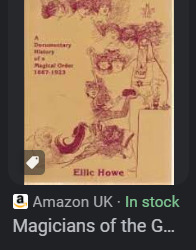
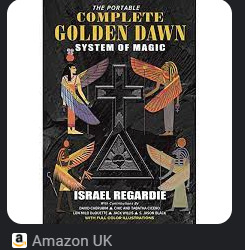
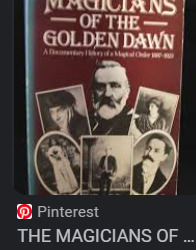
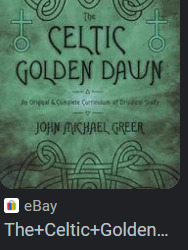
0 notes
Text
Une brève histoire de Thelema
Post #2
Aleister Crowley (12 octobre 1875 - 1er décembre 1947) a créé en 1907 un cadre dans lequel pouvait se déployer pleinement la Volonté, Thelema. Ce cadre il l’appela Argenteum Astrum (Silver Star en anglais, l’Etoile Argentée) et porte le sigle A∴A∴
Si Aleister a créé la A∴A∴ c’est parce qu’il était partie prenante d’un précédent groupe du même ordre appelé Aurora Aurea (Golden Dawn en anglais, l’Aube Dorée) qui avait été créé par William Wynn Westcott, Samuel Liddell MacGregor Mathers et William Robert Woodman, groupe qui arrivait à son éclatement du fait de divisions internes.
L’Aurora Aurea était conçue comme une organisation maçonnique, donc fortement axée sur l’hermétisme et l’aspect rituélique. Mathers et Crowley vont y ajouter l’occultisme et des rituels afférents qui vont sortir l’Aurora Aurea de sa zone de confort et de son embourgeoisement.
L’Argenteum Astrum va créer cette passation de personne en marche sur le chemin de la connaissance à personne en recherche, créant ainsi une chaîne sans brisure et à multiples ramifications. La plupart de ces “chaînes” ont donc Aleister Crowley comme personne de départ.
Thelema, la “religion”, a un fonctionnement “en loge” comme les francs massons, au sein de l’Ordo Templi Orientis (OTO), de même qu’en Eglise au sein de l’Ecclesia Gnostica Catholica (EGC), et aussi individuellement, c’est-à-dire qu’une personne peut évoluer solitairement sur le chemin avec l’aide d’une personne plus en avant qu’elle. Les trois façons se valent. Certains pratiquent les trois, d’autres deux, et d’autres encore une seule.
Plus en avant je ferrai référence à ces différentes personnes et organisations toute reliées entre elles, ainsi qu’avec moi-même et vous-même (si vous le souhaitez) pour les expliquer plus en détail.
La complexité de la chose n’est pas là pour vous embrouiller mais bien parce qu’elle a une raison, comme vous le découvrirez.

1 note
·
View note
Photo






The Crime of the Century (1933) William Beaudine
August 25th 2021
#the crime of the century#1933#william beaudine#stuart erwin#wynne gibson#frances dee#jean hersholt#robert elliott#david landau#gordon westcott#bodil rosing#william janney#torben meyer#arthur hohl#on probation#pre-code
1 note
·
View note
Photo


This tiny comment about William's skull is a reference to the fact that William Wynn Westcott (both historical+MO's) was a coroner and probably knew quite a bit about Phrenology (which btw was pretty popular during the 19th century).
I really like tiny details like that.
#makai ouji#devils and realist#william twining#william wynn westcott#my edit#I guess#makai ouji changed panels#mo edit
11 notes
·
View notes
Text
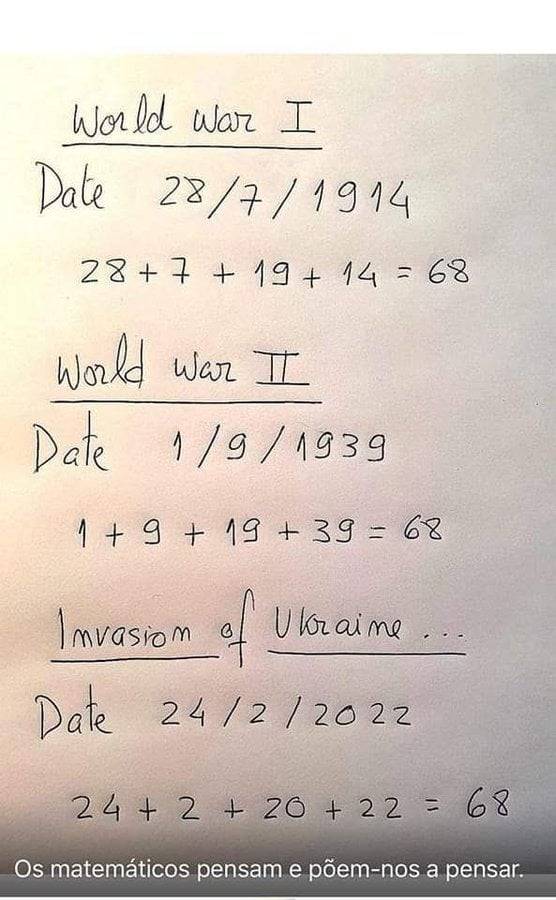
E os teóricos da coincidência piram...
68 seria uma referência a Apocalipse 6:8: "E olhei, e eis um cavalo amarelo, e o que estava assentado sobre ele tinha por nome Morte; e o inferno o seguia; e foi-lhes dado poder para matar a quarta parte da terra, com espada, e com fome, e com peste, e com as feras da terra."
Por que fatos fundamentais da história, os que conduzem a novos rumos, ocorrem em datas cabalísticas?
Isso ocorre porque os altos membros das sociedades secretas por trás deles seguem à risca a implementação de um Plano, que para ser bem sucedido, de acordo com suas crenças ocultistas, deve ser posto em ação em um tempo o mais propício e vantajoso em termos astrológicos e numerológicos. Suas decisões e ações são regidas pela gematria (em grego, geometria), um sistema de código e numerologia assírio-babilônico-grego, posteriormente adotado na cultura judaica, que atribui valor numérico a uma palavra ou frase na crença de que palavras ou frases com números numéricos idênticos aos valores guardam alguma relação entre si ou têm alguma relação com o próprio número, uma vez que podem ser aplicados à natureza, à idade de uma pessoa, ao ano civil ou similar.
Os maçons e illuminati jamais dão início a algo importante sem primeiro determinar o momento mais auspicioso para a sua execução, e uma vez determinados o dia e o horário precisos, não medirão esforços para cumpri-lo meticulosamente, ainda que todas as circunstâncias pareçam desfavoráveis.
A decisão baseada em uma escolha bem precisa e numérica é típico da mentalidade e do comportamento satanistas, pois estes, em vez de adorarem o Criador, preferem adorar as coisas criadas, os deuses das forças da natureza, a própria natureza (astros, animais e o próprio homem) e aspectos subjacentes da natureza, bem como o conhecimento científico, especialmente a matemática e a geometria. Os números são tidos por eles como sagrados e possuidores de propriedades mágicas intrínsecas, ainda mais se combinados corretamente. Quando maior é o grau de acuracidade com que os números – “portadores dos segredos do universo” – são combinados e agrupados, maior será o poder espiritual e material liberado, poder este canalizado para a consecução de seus intentos.
As propriedades místicas dos números foram desenvolvidas por Pitágoras (570-495 a.C.) e Platão (428/427-348/347 a.C.), e a ciência da matemática esotérica passou dos gregos para os cabalistas, que a transmitiram aos místicos ocidentais. Todo movimento, proporção, tempo e, enfim, toda noção de quantidade e harmonia podem ser representados por números; segue-se que tudo aquilo que pode ser atribuído a estes pode também ser expresso por números, como símbolos de virtudes e leis ocultas.
Os filósofos sabem que os movimentos da natureza são rítmicos; os médicos já observaram este fato na periodicidade das doenças. A gematria, ou primeira divisão da Cabala, ensina como atribuir valores numéricos às letras de certas palavras e tirar conclusões da proporção entre a soma de um texto e a soma de outro.
Um dos maiores ocultistas e satanistas da história, o cabalista, teosofista, rosacruz e maçom inglês William Wynn Westcott (1848-1925), co-fundador em 1887 da Hermetic Order of the Golden Dawn com Samuel Liddell MacGregor Mathers (1854-1918) e William Robert Woodman (1828-1891), assim explica a ciência oculta dos números:
“Os seguidores de Pitágoras referenciavam cada objeto, planeta, homem, ideia e essência a algum número de um modo que para a maioria dos modernos pode parecer curioso e místico ao extremo. ‘Os numerais de Pitágoras’, diz Porfírio, que viveu por volta de 300 a.C., ‘eram símbolos hieróglifos, por meio dos quais ele explicava todas as ideias concernentes à natureza das coisas’, e o mesmo método numérico de explicar os segredos da natureza está novamente sendo suportado na nova revelação da ‘Doutrina Secreta’, de Helena Blavatsky. ‘Os números são uma chave para as antigas visões da cosmogonia – em seu sentido mais amplo, espiritual e fisicamente considerada, à evolução da presente raça humana; todos os sistemas de misticismo religioso estão baseados nos numerais. O sagrado dos números inicia com a Grande Primeira Causa, o Único, e termina somente com o zero – símbolo do universo infinito e sem limites’.” [Westcott, William Wynn. Numbers: Their Occult Power and Mystic Virtues, London, 1890, p.15.]
Um exemplo notório da aplicação dessa ciência oculta dos números é o famoso Dia D, o ponto de virada a favor dos Aliados na Segunda Guerra Mundial (1939-1945), que foi escolhido para ser o dia 6 de junho.
Os desembarques ocorreram ao longo de um trecho de 80 quilômetros da costa da Normandia. O supremo comandante das Forças Expedicionárias Aliadas foi o general Dwight Eisenhower (que exerceria o duplo mandato de presidente dos EUA de 1953 a 61), enquanto o comando geral das forças terrestres (21º Grupo de Exércitos) foi do general britânico Bernard Montgomery. A operação, planejada por uma equipe do tenente-general britânico Frederick Morgan, foi a maior invasão anfíbia da história mundial e foi executada por elementos terrestres, marítimos e aéreos sob comando britânico direto, com mais de 160.000 soldados desembarcando em 6 de junho de 1944: 73.000 americanos, 61.715 britânicos e 21.400 canadenses.
Muito já se disse sobre tais fatos, mas o que poucos sabem é que os Aliados poderiam ter invadido a Normandia muito antes da data que entrou para a história como o “Dia D”, o que provavelmente teria poupado a vida de milhares de soldados e encurtado a duração da guerra, mas preferiram deliberadamente adiar até terça-feira, 6 de junho de 1944, sem que houvesse um motivo lógico-estratégico aparente.
A lógica residia no significado ocultista dos números, pois junho é o sexto mês do ano, o que se somava ao sexto dia do mês, e que se somavam aos algarismos do ano 1944 que, somados, davam 18 (6+6+6).
Destarte, a invasão que inverteu o curso da guerra a favor dos Aliados e colocou a história na linha de eventos em que nos encontramos, se deu em uma data que perfazia um duplo 66 e um triplo 666.
O número 6 é muito importante para o ocultista porque é o “número do homem”: o número (para os satanistas) do “governo humano perfeito” é o 66, e o número do “líder mais perfeito de todos os tempos”, o Anticristo, é o 666.
Em datas cabalísticas como o 6 de junho, inúmeras seitas satânicas e sociedades secretas ocultistas, como a Bohemian Grove, que congrega altos membros da Elite Illuminati, costumam sacrificar crianças e cumprir seus rituais de sangue para continuarem mantendo o seu poder secular.
Toda guerra, a Segunda Guerra Mundial sobretudo, pelo número de mortos, em torno de 40 milhões, é usada pela elite satânica dominante como gigantescos rituais de sacrifício humano. Desde as primeiras civilizações, sacrifícios são oferecidos ao sol, ao deus-sol, daí que o símbolo do sol esteja estampado em tudo, desde logomarcas de empresas a bandeiras nacionais. A publicidade procura sempre apor a imagem de seus produtos ao sol nascente…
Agradecimentos especiais ao meu irmão, o fotógrafo Rogério Suenaga, que me enviou os cálculos numerológicos.
#primeira guerra mundial#first world war#world war one#world war 1#segunda guerra mundial#world war 2#world war two#world war ii#second world war#war ukraine russia#russia ukraine putin#putin ukraine#guerra na ucrânia#russiaucrania#numerologia#cabala#gematria#conspiracy theory#coincidencia#matematica#matemática#apocalipse#biblia#armageddon#fimdomundo#juizofinal#sacrifício#soldados
36 notes
·
View notes
Text
CHAOS MAGICK
Phil Hine - Condensed Chaos
Peter Carroll - Liber Null & Psychonaut
Peter Carroll - Liber Kaos
Stephen Mace - Stealing the Fire From Heaven
DIVINATION & TAROT
John Greer - The Art and Practice of Geomancy
AE Waite - Pictorial Key to the Tarot
Robyn Valentine - Magickal Tarot
Grand Orient - A Manual of Cartomancy
Paul Foster Case - The Tarot: A Key to the Wisdom of Ages
GOETIA
(Mathers & Crowley translation) - The Lesser Key of Solomon
CEREMONIAL MAGICK
Rufus Opus - Seven Spheres
HERMETICISM
Cicero & Cicero - The Essential Golden Dawn
Three Initiates [William Walker Atkinson] - The Kybalion
Israel Regardie - The Tree of Life
Israel Regardie - A Garden of Pommegranates [Scrying on the Tree of Life]
The Three Initiates - The Kybalion
Hermes Trismegistus - Corpus Hermeticum
Hermes Trismegistus - The Divine Pymander
Terrence McKenna - Exploring Hermetic Traditions
QABALAH
Lon Milo Duquette - Chicken Qabalah of Rabbi Lamed Ben Clifford
William Wynn Westcott - Sepher Yetzirah [Book of Creation]
Manly P Hall - Occult Anatomy of Man
Manly P Hall - The Sacred Magic of the Qabalah [the Science of Divine Names]
Élias Gerwuz - Hidden Treasures of the Ancient Qabalah
Gareth Knight - A Practical Guide to Qabalistic Symbolism
Dion Fortune - The Mystical Qabalah
Aryeh Kaplan - Sepher Yetzirah
ANGELIC | ENOCHIAN
Lon Milo Duquette - Enochian Magick
Geoffrey James - The Enochian Magick of John Dee
George J Marshall - Angels
Anton LaVey - The Satanic Bible
Edward Kelly - The Stone of the Philosophers
Portal: Enochian Magic Archives
OCCULT PHILOSOPHY
Cornelius Agrippa - 3 Books of Occult Philosophy
Cornelius Agrippa - The Philosophy of Natural Magic
Francis Barrett - The Magus [A Complete System of Occult Philosophy]
Carl G. Jung - Psychology & the Occult
MATHEMATICS, GEMATRIA, GEOMETRY & NUMEROLOGY
William Wynn Wescott - Numbers: their Occult Powers & Mystic Virtues
Various - the Quadrivium
Wade Coleman - Sepher Sapphires [A Treatise on Gematria]
DICTIONARIES, ENCYCLOPEDIAS
JP Cooper - an Encyclopaedia
Julian Franklyn - A Dictionary of the Occult
ALCHEMY
Albert Pike - Magnum Opus [the Great Work]
Robert Allan Bartlett
Edward Kelly - The Stone of the Philosophers
Basil Valentine - Triumphant Chariot of Antimony
Portal: the Rosicrucian Order’s Alchemical Manuscript
SPIRITUAL TEACHINGS
The Bhagavad Gita
Swami Sivanada Radha - Hatha Yoga
PLANT ALLIES
Dale Fendell - Pharmako Poeia [Plant Powers, Poison & Herbcraft]
Scott Cunningham - Cunningham’s Encyclopedia of Magical Herbs
CEREMONIAL
AE Waite - The Book of Ceremonial Magic
TRANSCENDENTAL MAGICK
Éliphas Levi & AE Waite - Transcendental Magic
HIGH MAGICK
Éliphas Lévi - The Doctrine & Ritual of High Magic
DARK STUFF
Richard Cavendish - The Black Arts
Reginal Scott - the Discoverie of Witchcraft
PAGANISM, PRAYER
Ceisiwr Serith - A Book of Pagan Prayer
MISC
William Wynn Wescott - The Isiac Tablet of Cardinal Bembo
Malaclypse the Younger - The Principia Discordia
Manly P Hall - The Secret Teachings of all Ages
Manly P Hall - The Initiates of the Flame
Richard Cavendish - Man, Myth & Magic
Charles Walker - The Encyclopedia of Secret Knowledge
Robert Anton Wilson - Prometheus Rising
Dion Fortune - Applied Magic
Dion Fortune - Psychic Self Defense
Mason HW - The Eloquent Blood
Llewyn’s Complete Book of Correspondences
Keith Readdy - One Truth & One Spirit
Aleister Crowley - Magick
Helena Blavatsky - The Secret Doctrine
Helena Blavatsky - Isis Unveiled
Tanzin Wangyal Ripoche - The Tibetan Yogas of Dream & Sleep
Aleister Crowley - the Book of Thoth
Brian R Pellar - On the Origins of the Alphabet
90 notes
·
View notes
Text
Today marks the Greater Feat of Samuel Liddell MacGregor Mathers, linguist, master mason, and Saint of Emergent Magick. Together with Dr. William Wynn Westcott and Dr. William Robert Woodman, Mathers founded the Golden Dawn and sparked the English Magical Revival. Mathers knew many occult contemporaries, including Madame Helena P. Blavatsky, Dion Fortune, and was a teacher of Aleister Crowley until their falling out. He is best known for translating many of the foundational texts of Western magick – The Kabbalah Unveiled, The Sacred Magic of Abremelin the Mage, The Tarot, and The Key of Solomon the King. In later years, Mathers and his wife Moina performed the Rites of Isis several times for crowds in Paris. It’s safe to say that without Mathers, it would have taken many more years for these books to come to light. Hail the passing of MacGregor Mathers, scholar and magus.

13 notes
·
View notes
Text
Les Baguettes de la Golden Dawn
(1000x25mm)


En 1888 à Londres, William Robert Woodman, Samuel Liddell MacGregor Mathers et William Wynn Westcott fondèrent l’Ordre Hermétique de l’Aube Dorée (the Hermetic Order of the Golden Dawn, titre souvent raccourci en Golden Dawn). Ils développèrent un système d’enseignements magiques tirés de la Franc-Maçonnerie, de grimoires médiévaux, de l’astrologie et de la Kabbale. Des magiciens modernes continuent toujours de construire sur l’œuvre de la Golden Dawn pour étendre la base de leur système de correspondances magiques, qu’on retrouve décrit par exemple dans l’ouvrage “Mystical Qabalah” de Dion Fortune (1935).
On pense que George Alexander fabriqua toutes ou certaines de ces baguettes cérémonielles à Anglesey durant les années 70, quand il fournissait des outils et bijoux à des practiciens tels que Alex et Maxine Sanders. George suivit le design original de la Golden Dawn pour les baguettes, destinées à être utilisées dans des rituels d’initiation et pour les travaux magiques privés de ses membres. Le symbolisme s’inspire de la magie égyptienne et des grimoires médiévaux. Comme le Lamen (pendentif magique que je vous montrerai la semaine prochaine) et bannières utilisés par la Golden Dawn, les baguettes incarnent aussi un système complexe de symbolisme des couleurs comme moyen d’atteindre des états de consciences modifiés.
La première baguette porte l’insigne de la tête d’onglet distinctive de l’office de Hegemon, connue comme le “Sceptre de Sagesse” et dédié à communiquer la religion. La baguette-Lotus, le seul et plus important outil utilisé à des fins magiques générales par les adeptes de la Golden Dawn, dérive d’un type de baguette illustré dans Le Livre des Morts et d’autres papyrus égyptiens. L’hexagramme qui couronne la baguette du Cancellarius symbolise la perfection et les deux grandes forces opposées (feu/eau, ou positif/négatif) dans un subtil équilibre. La baguette de l’Adepte-Chef (Ur-Uatchti) dépeint le disque solaire ailé surplombant deux serpents. La baguette du Hiérophante, aussi appelée le “Sceptre de Pouvoir”, est symboliquement la baguette la plus importante dans le Hall des Néophytes* et dans les halls de l’Ordre Extérieur*. La baguette de l’Adepte représente un phœnix, vénéré dans l’Égypte antique, ainsi qu’une représentation stylisée de la tête du dieu Set. Enfin, au sommet de la baguette du Praemonstrator se tient une croix maltaise, représentant les quatre éléments dans un contrôle équilibré.
(* ces titres correspondent à différents degrés d’initiation au sein de la Golden Dawn)
#artefacts occultes#outils rituels#baguette#baguette magique#symbolisme hermétique#magie ceremonielle#golden dawn#histoire de la magie et de l’occultisme#hermetic order of the golden dawn
20 notes
·
View notes
Text
🐞The Golden Dawn🐞
Here is my previous post where I mentioned the golden dawn briefly: 🦋The Elements🦋
The Golden Dawn: The Golden Dawn originated in England, and the directional/elemental correspondences reflect a European perspective. To the south are the warmer climates, and thus is associated with fire. The Atlantic Ocean lies to the west. The north is cold and formidable, a land of the earth but sometimes not a lot else.
The Golden Dawn was also a magickal organization made in the United Kingdom. It was a secret society which consisted of it’s founders: Samuel Liddell MacGregor Mathers, William Wynn Westcott, and William Robert Woodman
There’s not much else on the Golden Dawn but it’s also not that important in magick as it is in magickal history but I’ll do deeper into that when I myself learn it.
Sources:
https://www.learnreligions.com/elemental-symbols-4122788?utm_campaign=shareurlbuttons&utm_medium=sm&utm_source=pinterest_ip
https://en.wikipedia.org/wiki/Hermetic_Order_of_the_Golden_Dawn
#learn#learning#magick#witch#itches#witchblr#cottage witch#eclectic witch#witchcraft#witch community#pagan#lgbt pagans#pagansofinstagram#ecletic pagan#paganlife#pagan witch#pagan wicca#norse pagan witch#wicca#wiccalife#green wicca#wicca help#wicca aesthetic
1 note
·
View note
Photo

Now for the list of Magical Masons:

Arthur Edward Waite:
All tarot readers begin with the Rider-Waite-Smith Tarot Deck. It’s founder Arthur E. Waite was a freemason. Initiated on 19th September, 1901. Even though his involvement with the masons was sporadic his involvement is documented and accepted by the freemasons. He is also the author of “A New Encyclopaedia of Freemasonry: Their Rites, Literature and History; Emblematic Freemasonry.” He was also involved with the Golden Dawn, entering the Societas Rosicruciana in Anglia (SRIA) in April of 1902.
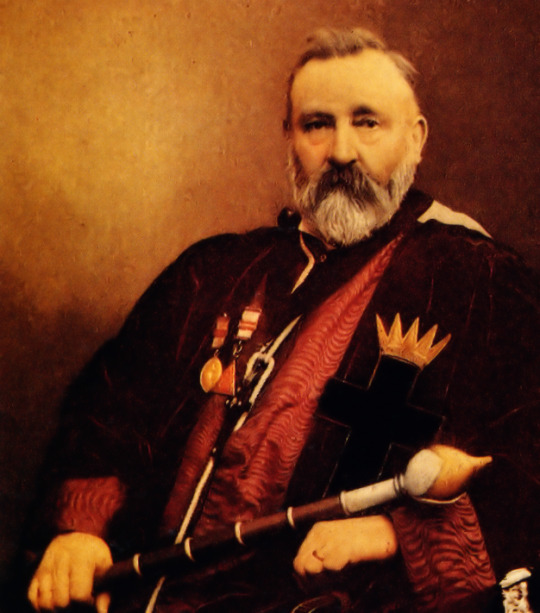
William Wynn Westcott:
Besides being the co-founder of The Hermetic Order of the Golden Dawn, William Westcott wrote many occult orientated books, one of which was “Numbers: Their Occult Power and Mystic Virtues.” He was initiated into freemasonry in 1871 on October 24th, becoming a Master in 1877 of The Parette and Axe Lodge No. 814, Crewkerne, Somersetshire.
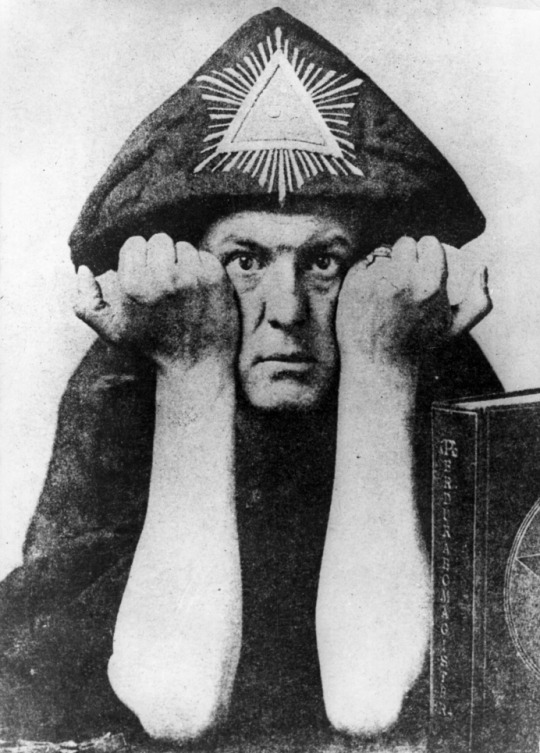
Aleister Crowley:
There is no freemasonry acceptance or official documentation of Aleister Crowley ever being more than an initiate in Anglo-Saxon Lodge No. 343. However, even though he claims to have been a close companion of John Yarker, a recognised freemason and author on many masonic titles, there is no such evidence to be found anywhere. It must be noted that “The Grand Lodge of England does not recognise Aleister Crowley as being a member of the craft. All his affiliations are with irregular bodies, and so he is denied recognition.”
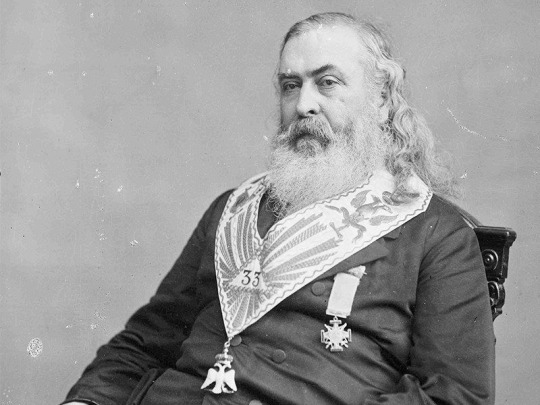
Éliphas Lévi:
Known by the nickname, “The Last Magi.” Éliphas Lévi wrote extensively on magic and
Magical freemasonry. Two of his most beloved titles are “Doctrine of Transcendental Magic and History of Magic.” These two well known books were however written before he was initiated into masonry and his time in The Lodge Rose du Parfait Silence, Grand Orient of France, Paris, lasted between March 1861 – August in the same year.
Algoth’s Grove
11 notes
·
View notes
Text
And our fourth horseman is…?
First at all, sorry for my bad english; as you know the english isn't my native language, so sorry for any mistakes you may encounter. I translated this post as a special petition for @imey-chan, but I'm not good at translating from Spanish to English, so I hope you can understand all this in the best way possible.
With the last Makai Ouji Pillar, many interesting things have come to us and one of them is the identity of the last Horsemen of the Apocalypse; so, in this loooong post, I will try to share my opinion about who could be the last of the apocalyptic horsemen.
As you know, we have already three of the four horsemen, Arthur, Barton and Mathers (this one is not confirmed as a horsemen, but either he has not denied being one of them in previous Pillars; so that I’m considering him one of them). But who is the last? Maybe could it be Wynn Westcott?
For those who don't remember, William Wynn Westcott appears in the Pillar 45, where he meets "by chance" with William who, at that time, is visiting London with Uriel. There, is where Wynn Westcott makes his first appearance and where looks like an elegant english gentleman who carries with him a walking stick, that surely went unnoticed in that time, but now could take more relevance; the reason of the stick's relevance? Well, simple and simple, it happens that this stick has the head of a horse in the handle.

Now, why is important that this walking stick have the shape of a horse in the handle? Well, if you remember, in Pillar 65, when Arthur also appears for the first time, he brings with him a pocket watch that also has the engraving of a horse on the cover. And well, we know what turned out to be the good Arthur.
Besides, in Pillar 79, Mathers confirms to William that the Christian family is the vessel for the knights (although, something strange was that he don't say nothing about Lord Barton or the Twining's family as vessel too).

About uncle Barton, the thing is more difficult, because he hasn’t shown nothing (or at least nothing that I remember at the moment) related to any horse; the only thing that we have is the confirmation that he's one of horsemen, said by Barton himself, and that was told to him by Samael in this last Pillar.

Now, the last one: Mathers. Since his first appearance on Pillar 30 he hasn't shown anything related to a horse (or at least I don't remember seeing anything) like Arthur or Westcott. But what we do know is that he isn't an angel or a demon, and that he confirms it by himself to William in Pillar 34, when Mathers himself goes to look for Twining.

I told you that until now it has not been confirmed that Samuel is a horsemen and the only thing that can relate him to the four horsemen is the question that William asks him in Pillar 79, when Mathers returns, from who knows where, and tells to William what's happening.

As William says, Mathers knows too much about what is happening for to be a simple magician, which leads us to think the same as Will when he conjectures that Mathers must be one of four horsemen, the only ones who would be well informed about the movements in Heaven, Hell and Earth.

The response of our sexy Mathers was a simple "it interests me", but that doesn't tell us absolutely NOTHING !!!! It's true, he knows a lot, but he could well be just a magician too well informed (and with possible good connections in Hell and Heaven), which I doubt. Furthermore, we must not pass over their powers, which seem to be quite strong; his ability to create powerful magic barriers is undeniable.
With all that, the figure of the self-styled "Count of Glenstrae" remains too enigmatic, because apart of being currently a professor of Latin in Stratford, of being previously member of the order of "The hand of God" as an exorcist and desire strengthen humanity, we don't know anything more about him.
Although, there is a phrase that says in Pillar 36 "do not wait for the last judgement, it takes place everyday", words that even William does not fully understand at that moment. The last judgement"? Does Mathers refer to the Apocalypse that he would preside over? Or why Mathers would speak of a "final judgment" and especially with Will?


But, let's to return to Westcott. In Pillar 48 we see how the german observe from the shadows, and very funny, as "Jack the Ripper" go after Will and how the killer becomes into the demon Lamashtu, without seeming surprised at such a change, which would suggets us, that Dr. Westcott is aware of the existence of the demons and, obviously, of the angels.

Although it seems surprised by the power of Uriel when that one destroys with a single blow to Lamashtu.

Another thing that points to him as the best candidate for to be the last of the horsemen is that he is related precisely to Mathers, because in Pillar 49, it is revealed that both men know each other. Although it lies in the air the question of which are those "business" to which Westcott refers? Maybe the start of the Apocalypse? The movements in Hell and Heaven? The other horsemen?


With this, if we apply the same logic with Arthur and Barton, it wouldn't be strange at this point, that even the faction of the horsemen of the Apocalypse are divided in two sides: one formed by Arthur and Barton and the other conformed by Mathers and Westcott.
In the end, it still lies in the air a lot of questions about this topic (for example, who is who? Perhaps Mathers is the horseman of war (maybe Perhaps the war waged in Paris was his work (see Pillar 31, that smile in page 11 was very suspicious), but this is very rebuttable)? Or Barton is the horseman of death (he caused the deaths of thousands of Londoners through the tuberculosis)?), but with all this, I leave here this long post, where I hope I have not forgotten to mention everything that I had in mind and, above all, to have exposed in the shortest and easiest way my opinion about the last of the horsemen of the Apocalypse. If after so wordiness you came here, thank you so much and I hope to read your opinions about this ^ 3 ^ !!!!
#makai ouji devils and realist#makai ouji#devils and realist#theories#william twining#arthur christian#thomas barton#samuel lidell mathers#william wynn westcott#four horsemen
58 notes
·
View notes
Text
Learn To Master The Numbers And Numerology! - By William Wynn Westcott (paperback) - Target
Read reviews and buy Learn to Master the Numbers and Numerology! - by William Wynn Westcott (Paperback) at Target. Choose from contactless Same Day Delivery ...
from Google Alert - Numerology https://www.target.com/p/learn-to-master-the-numbers-and-numerology-by-william-wynn-westcott-paperback/-/A-84710732
via IFTTT
0 notes